FAMOUS
SIEBE GORMAN
6 BOLT ADMIRALTY PATTERN
DIVE HELMET
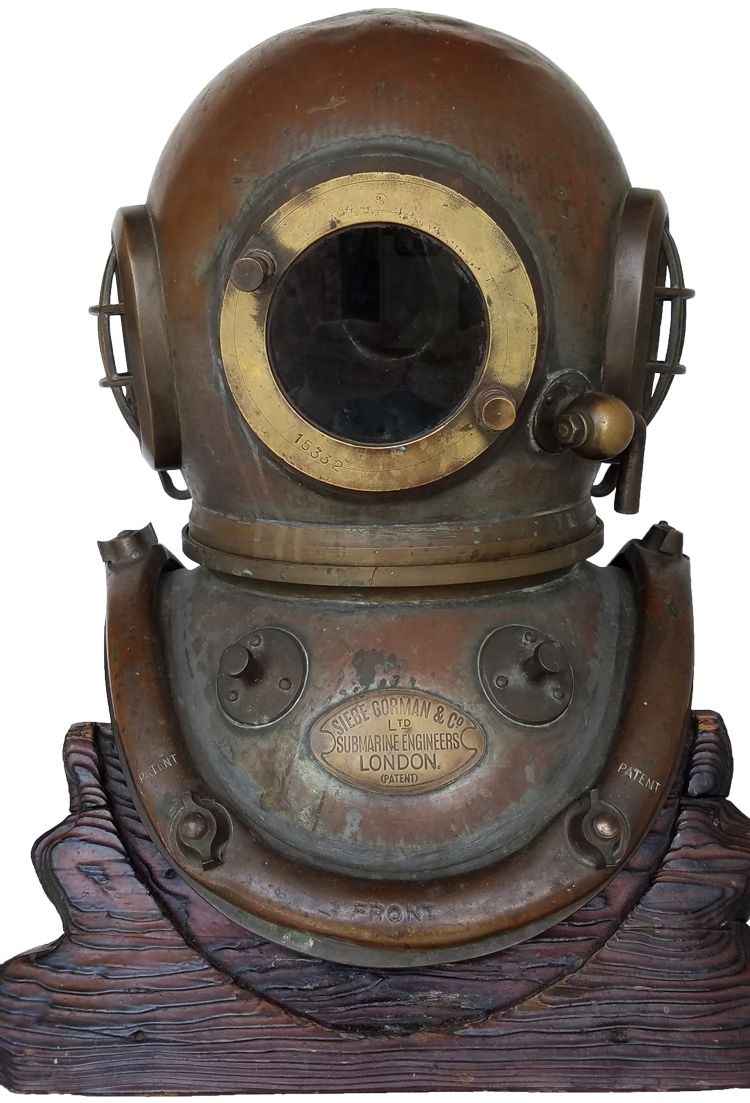
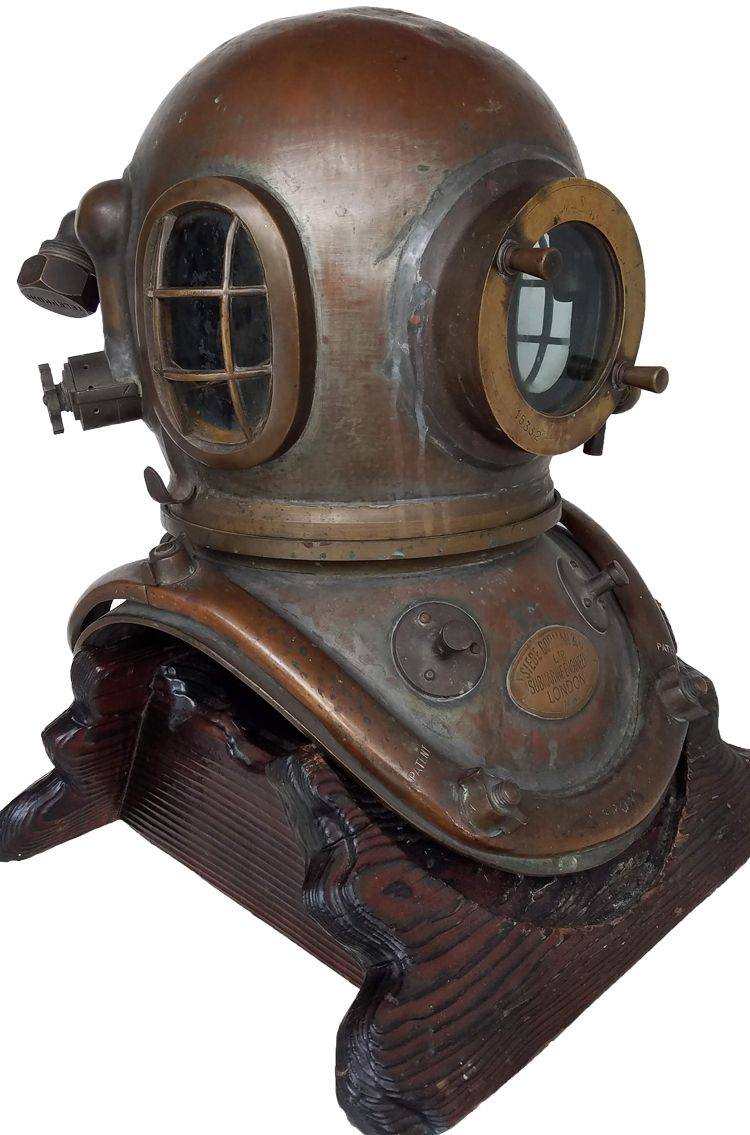
Stand Not Included
In 1840, August Siebe invented the deep sea diving helmet as we know it today. This 6 Bolt Royal Navy Admiralty Pattern No 15332, is an excellent example.
SERIAL NUMBER: 15332
WEIGHT: 46.5 lbs
DIMENSIONS: 20 3/4″ H x 16″ W X 16″ D
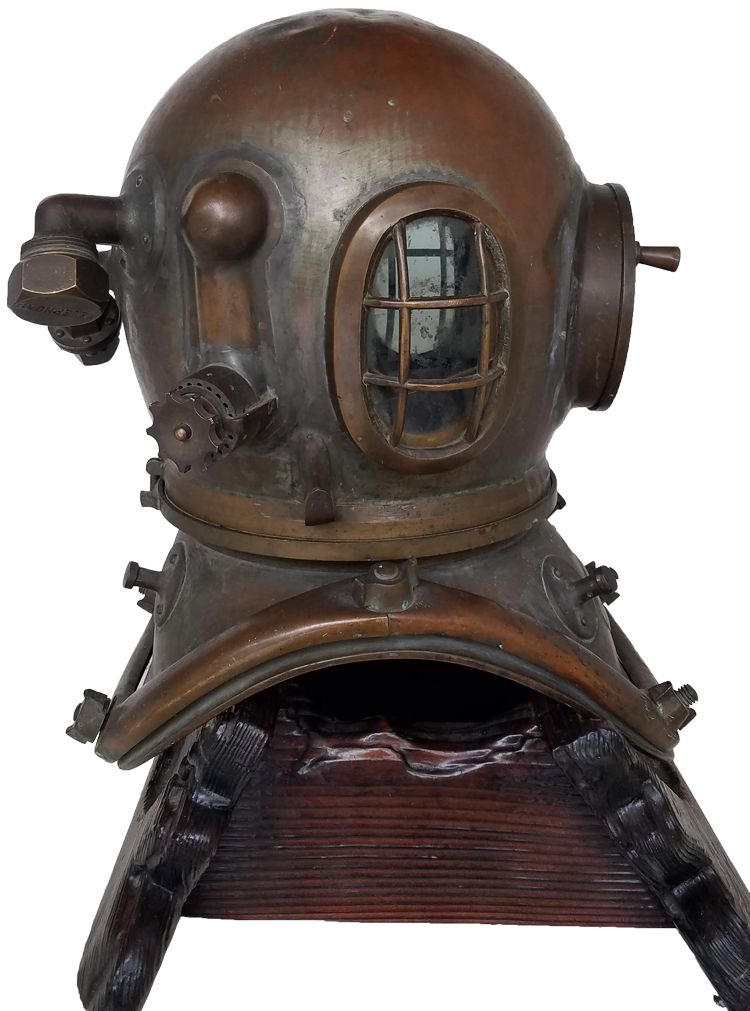
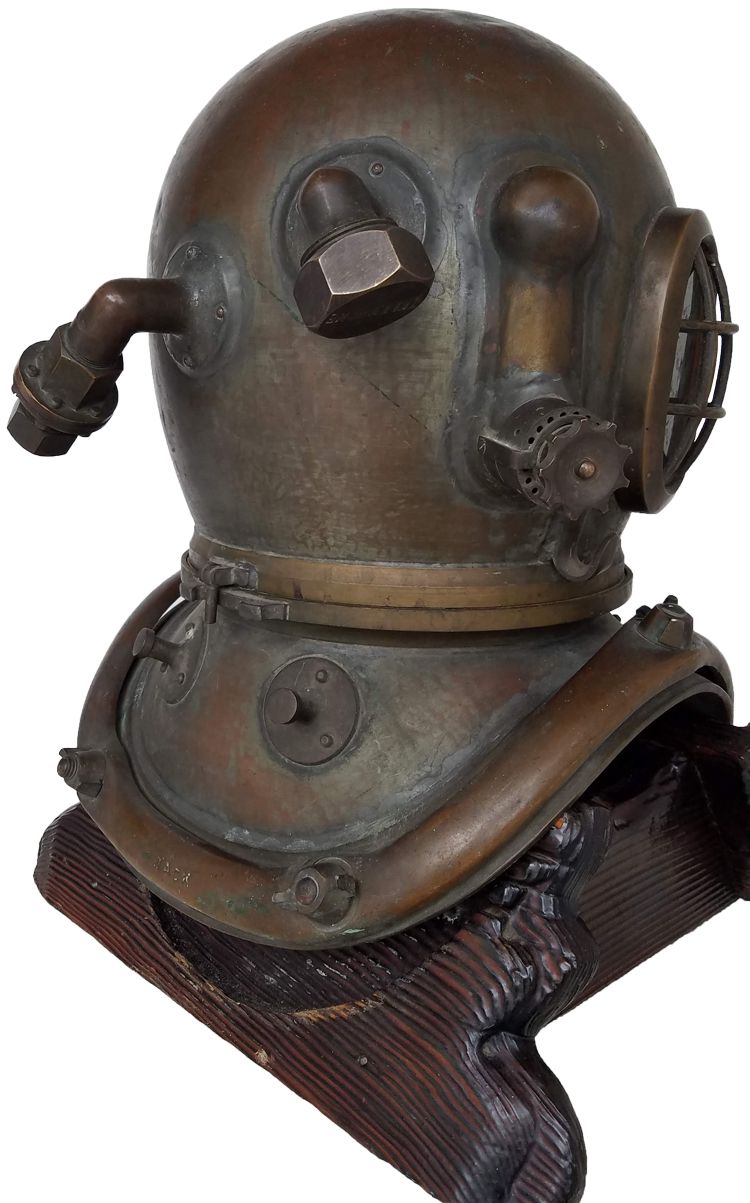
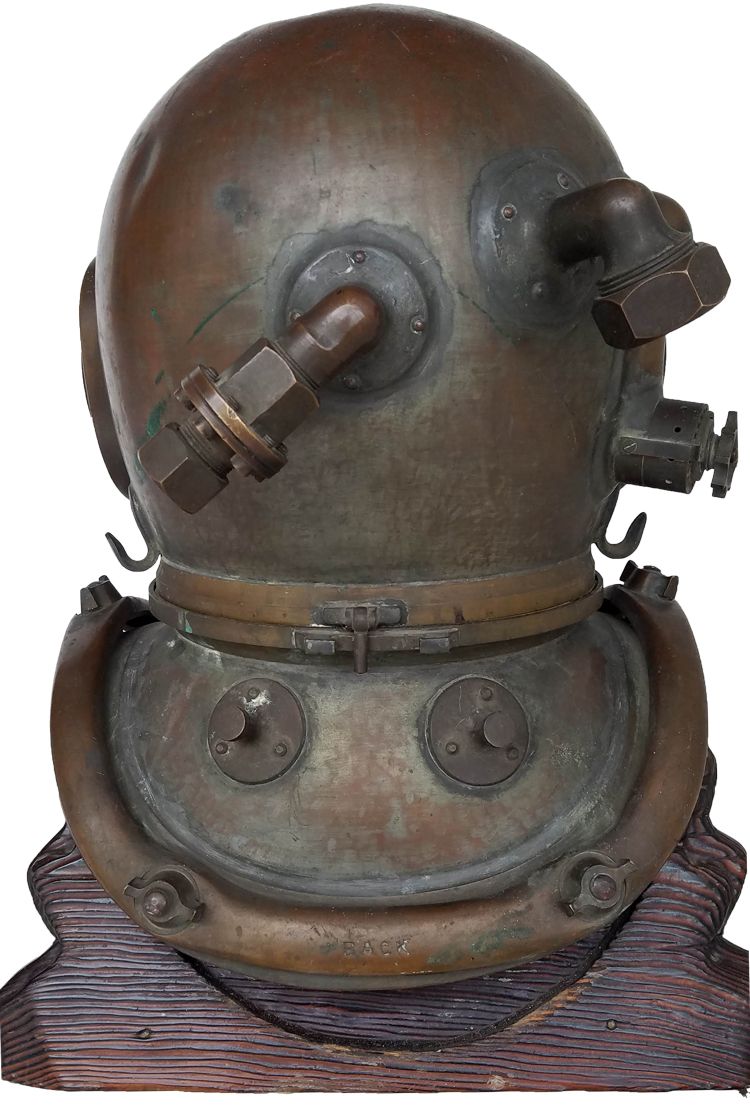
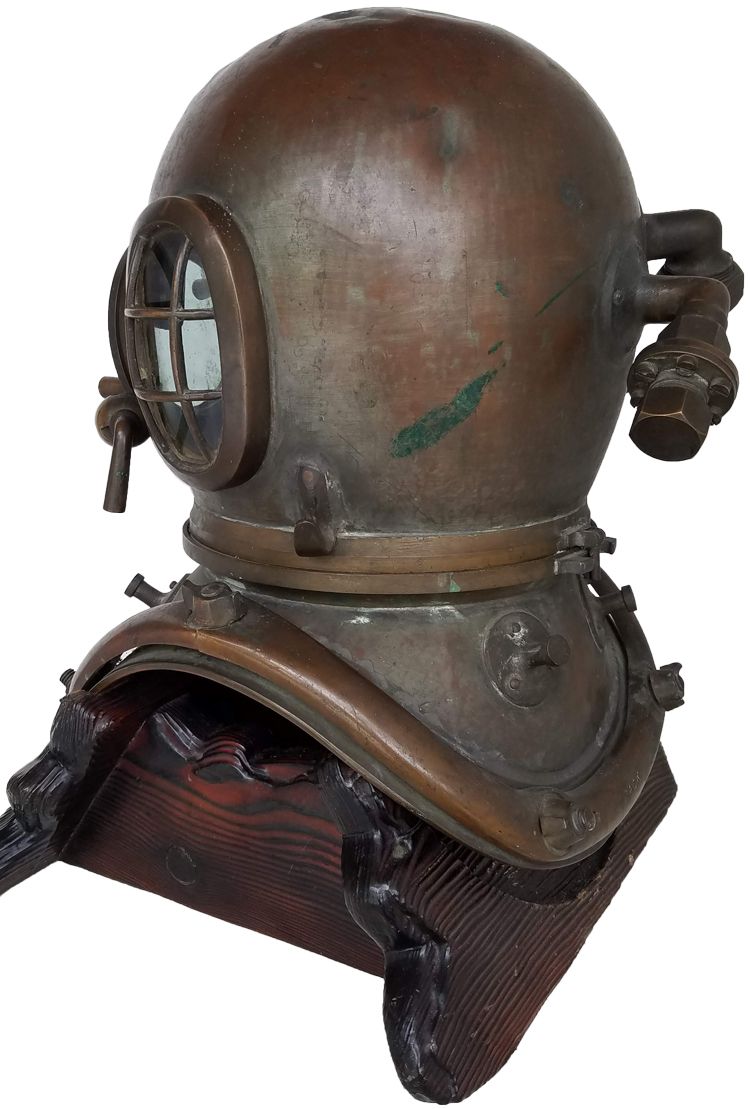
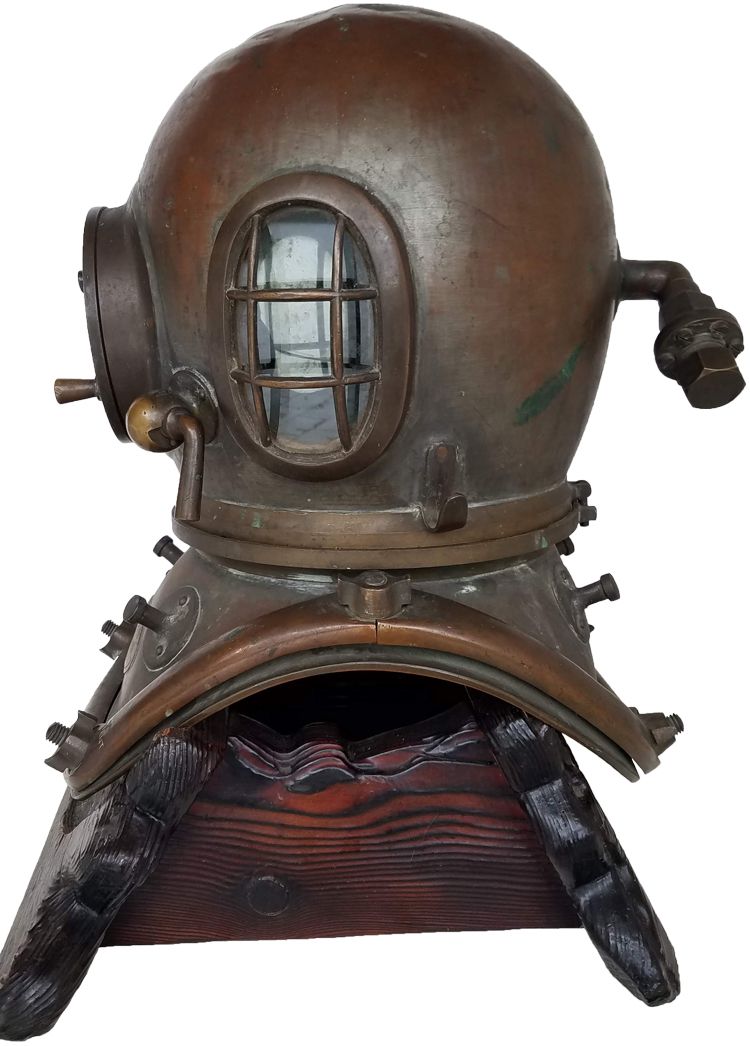
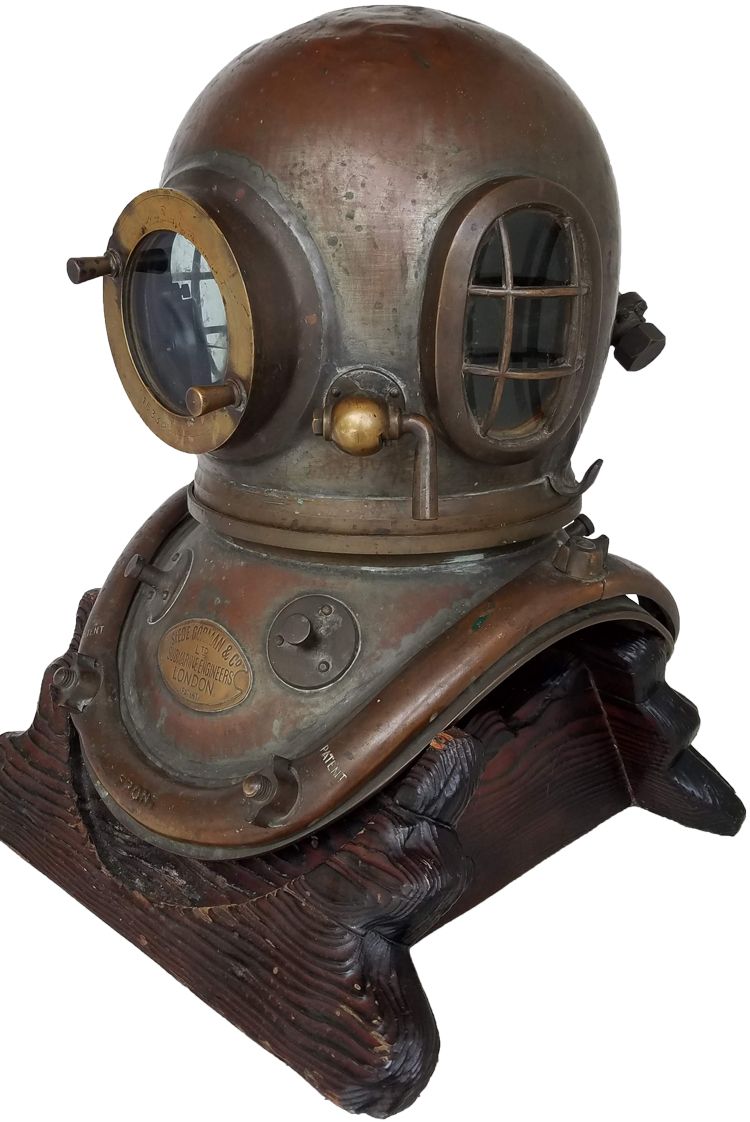
Presented is a 6 Bolt Royal Navy Admiralty Pattern helmet, with the serial number 15332 on the front window frame and the inside neck ring. In 2007, we sold a Siebe Gorman 6 bolt helmet with a beast plate stamped 9529 dated to 1935 and is a benchmark for this one.
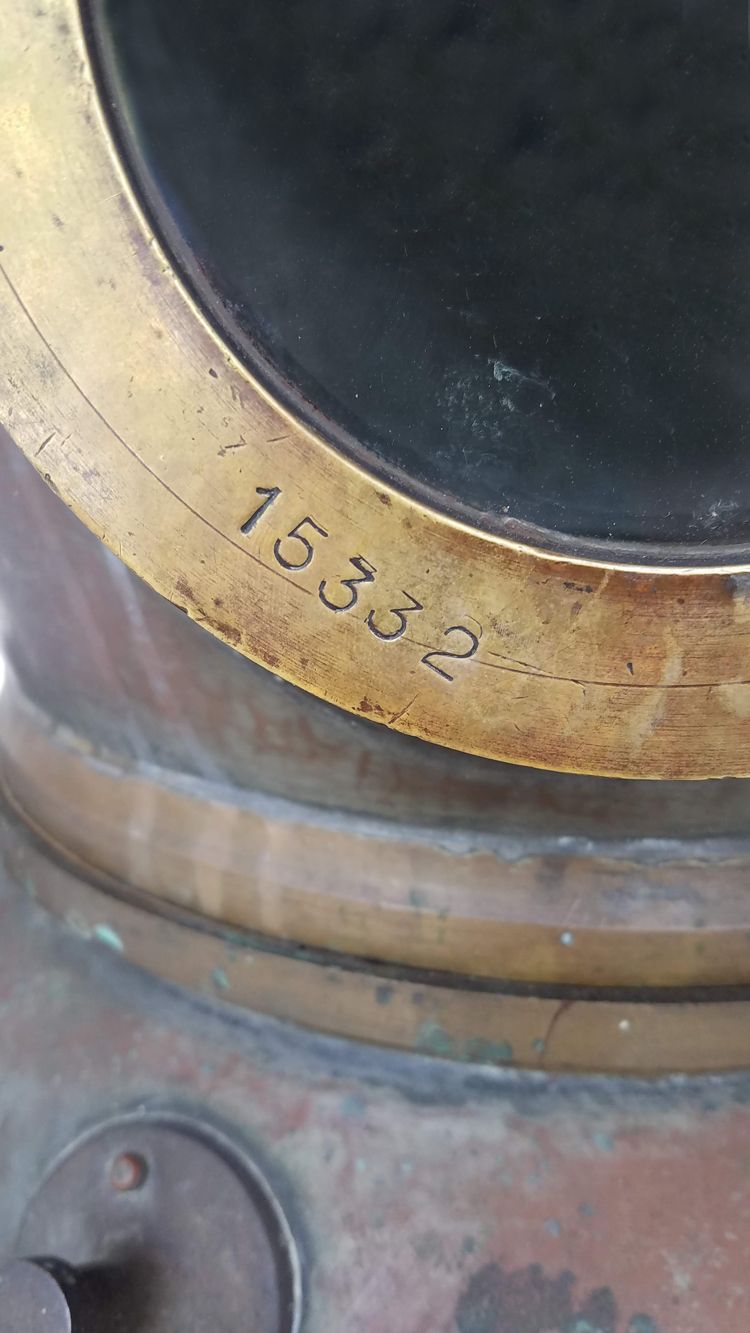
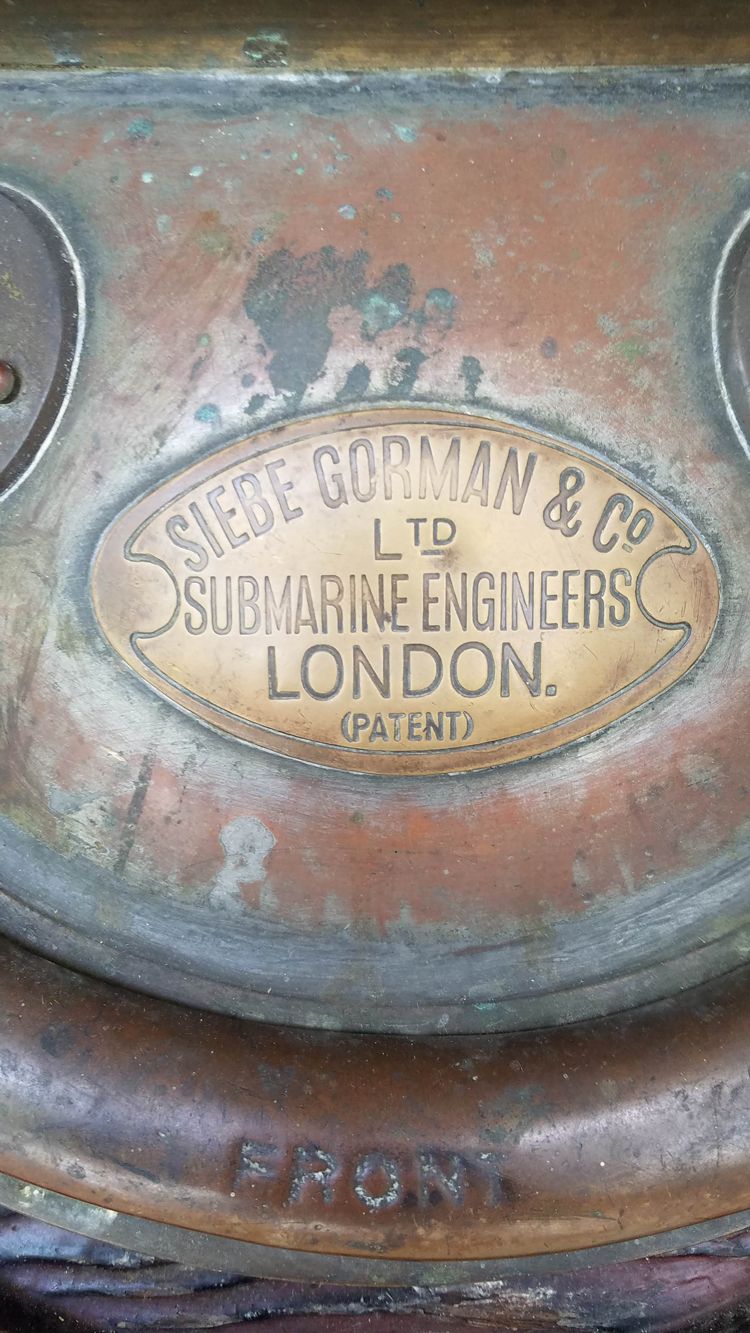
Like all used diving gear, this is being sold for DISPLAY ONLY. It should not be dived without having passed inspection by a certified dive shop.
MARKINGS: The maker’s tag, reads Siebe Gorman & Co. Ltd., Submarine Engineers, London, Patent. The front brail is marked, “Patent” “Front” “Patent” and underneath is marked 66. The rear brail is marked, “Back” in the center.
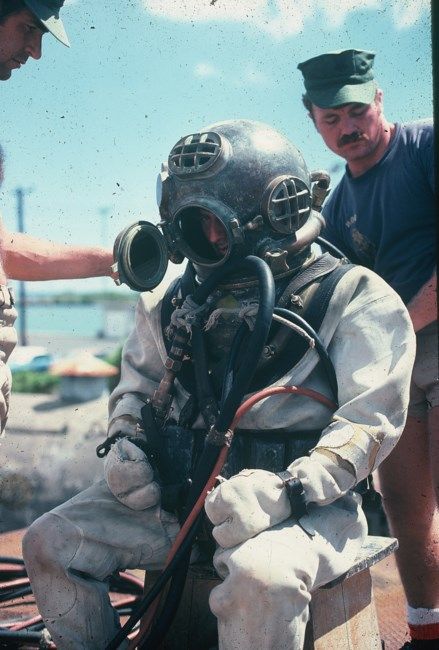

The previous owner of these fine helmets was Pete Berdzar, a Navy diver who worked much of his career out of Point Loma and the Marshall Islands where the Navy was mothballing and disposing of ships and performing salvage operations. After active duty, he continued to be involved in Naval operations. It appears that most of his career was with the 7th Fleet in the Pacific. At one point, he was involved with a program training sealions and dolphins to retrieve ordinance and perform other duties. He also worked out of the Naval Air Weapons station at China Lake, CA, and did some flight training at Miramar. His collection of over 40 dive helmets included a number of Mark Vs, along with the ones we are offering.
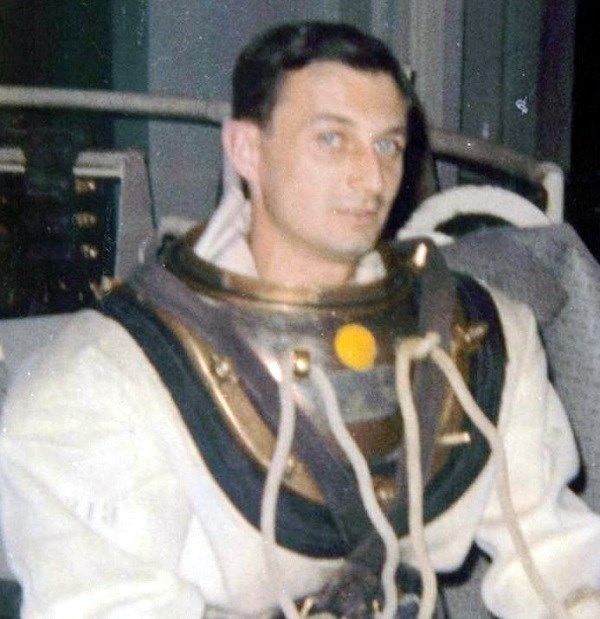
BRIEF HISTORY: Augustus Siebe the German-born founder of the firm which bears his name (1788-1872) is considered “the father of diving”. Siebe’s ‘closed’ diving helmet, first produced in 1840, allowed divers to dive safely to greater depths than ever before. Attached to a rubber suit, it became the ‘Standard Dress’ that revolutionized diving and made the underwater worker an essential part of both salvage operations and civil engineering. Many of the great building projects of the Victorian era – bridges, tunnels and lighthouses still in use today – could not have been built without divers.
Siebe’s design was so successful that it remained in use, essentially unchanged, until 1975. However, the Royal Navy required one of their own design, and the British Admiralty requested a helmet made to their specifications which used heavier materials in 1938. This was the Royal Navy six bolt helmet, as seen in this offering. The rest of the “Jake” was standard commercial equipment, except for the front weight which had a light fitted to it, to aid the diver. The chest weights weigh about 40lbs. each and are tied down to stop the helmet rising from the divers shoulders. The weights are hung from weight hangers on the front of the breast plate.
The Royal Navy set out to extend the limits of deep diving and established a world depth record, in 1948, of 540-feet wearing a Siebe Gorman helmet of this design, but incorporating a Davis Injector system, flexible dress, and used the fast dwindling supplies of American Lend-Lease helium. Petty-Officer Bollard set the depth record that was to last eight years. Not until 1956 would the baton pass to another.
In October of that year, Senior Commissioned Boatswain George Wookey, descended to a depth of 600-feet, setting record for a helmeted diver wearing flexible dress that still stands.
